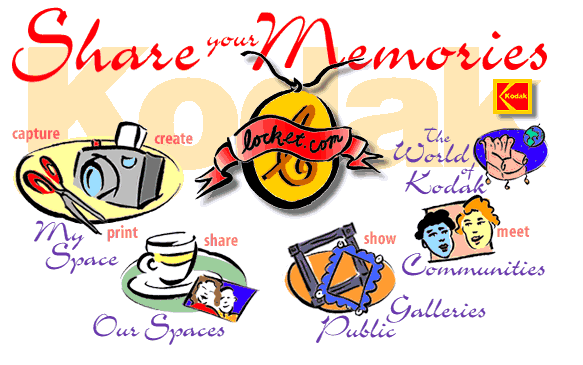Kodak approached vivid to create a proof of concept for a new, Internet-driven business unit for Kodak. This service, later launched as the Kodak Picture Network, allows customers to send-in their film to Kodak for developing and have their images appear on the Web. Once there, subscribers can order reprints or picture-personalized merchandise, but more importantly, they can maintain archives of their pictures, share them with others (such as family, friends, or travel partners), and create albums and stories with them.
vivid created the proof of concept so that Kodak would have an initial visualization of the service so that it could sell the concept and business plan within its organization. The design of the service was developed to appeal to Kodak’s target markets with a friendly, colorful interface, yet take-up minimal screen real estate and download quickly. The proof of concept included developing concepts and visualizations for community tools and discussion areas.
1996
Participants:
Nathan Shedroff: Information, Interaction, and Visual Design
Marsha Plat: Information and Interaction Design
Maurice Tani: Visual Design and Production
Sarah Berg: Project Management
Chuck Gathard: Engineering
Jake Dunham: Engineering
Beth O’Rourke: Illustration and Visual Design
vivid evaluated Kodak’s existing market research and then identified additional opportunities and challenges specific to the Kodak project. The product of that phase was a Requirements Document which clarified company goals, message and audience. To enable a rapid design process, vivid created an online visual research tool to showcase several visual styles. After viewing these treatments, Kodak was able to quickly choose an aesthetic direction for the project. In parallel, vivid presented three different cognitive models for the interaction. After choosing the visual treatment and cognitive model, vivid built-out the screens and deployed the prototype.
To reinforce the difference between personal and public spaces and lend a sense of intimacy to the site, vivid followed a living room visual metaphor. The cognitive model reinforced this distinction between public and private space by expanding the concept of online photo-finishing to the much broader idea of sharing and community. Likewise, site navigation accommodated different personality types and individual preferences.
vivid then delivered a Recommendations Document, which, together with the Proof of Concept, provided Kodak with context to the design decisions vivid made during project development. It also discussed the insights, concerns and open issues vivid saw as critical to the successful deployment of the Kodak project. Technical recommendations were addressed in a white paper which covered topics such as appropriate system architecture and engineering features. The Proof of Concept not only helped Kodak to quickly identify a compelling visual style, but identified the complex issues that the Kodak team would need to consider for successful future site development.

Recent Comments